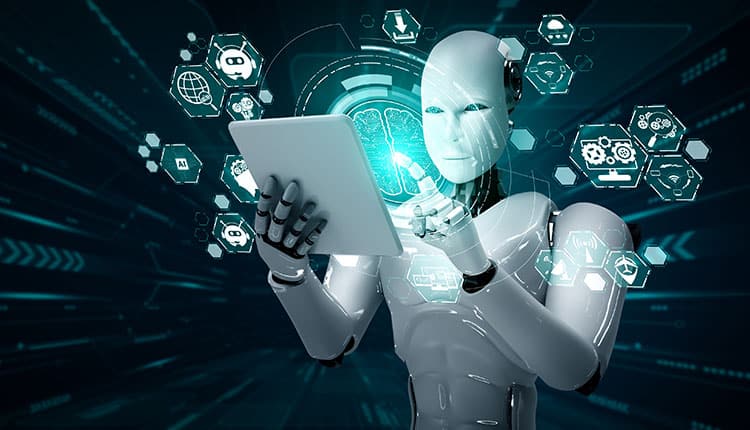Applications of AI-powered digital twins in education: Simulating campus operations for sustainable growth
By: Dr Mohan Reddy, Director IQAC, CMR University Bengaluru
Living in a world where the complex tasks and activities that we engage in are being converted into an easy one with the help of Artificial Intelligence (AI) and the tools associated with it, we are forming into a societal setup where AI is going to be an inevitable part of our life. Learning and experiencing the changes that AI has brought to our lives, we always believe that it can’t surprise us anymore, and still it comes with the services and applications that surprise and delight us. Variety of problems are approached with an artificial intelligence-integrated digital twin, demonstrating its applicability across different fields.
Artificial intelligence and digital twins (DT) have become more popular in recent years and have seen usage across different application domains for various scenarios. One of the emerging fields in AI technology that is gaining traction in universities and the educational ecosystem is AI-powered digital twins. These digital twins can simulate various campus operations, offering a revolutionary approach to optimize management and enhance sustainability. By reciprocating real-world systems in a digital and virtual environment, universities can predict challenges, test solutions, and make data-driven decisions for sustainable growth.
Understanding the concept of Digital Twins
A digital twin can be described as the virtual representation of a physical system or entity. In the context of education, particularly at universities, a digital twin can be very beneficial as it can replicate campus infrastructure, operations, and resources. These simulations are driven by AI, which processes vast amounts of data and runs predictive models to foresee potential challenges and improvements. Unlike traditional monitoring systems, AI-powered digital twins provide real-time, dynamic updates, constantly evolving with the influx of new data.
Universities are the home to complex ecosystems—comprising students, faculty, facilities, and administrative functions—that require efficient management. With the ability to simulate these systems, we can implement the changes and concepts that we have in mind without disrupting the actual campus. This makes digital twins a powerful tool for universities aiming to create more efficient and sustainable operations.
A digital twin should have the ability to process various kinds of data, including real-time data, for providing real-time monitoring of the physical system.
In the realm of higher education, the concept of Digital Twins is paving the way for a remarkable transformation in the learning experience. By harnessing the power of Digital Twins, faculty members can create simulation models tailored to course requirements, offering students an unparalleled level of immersion and interactivity.
Transforming the Traditional Teaching Methodology
Gone are the days of passive lectures and chalk-and-talk approaches. Digital Twins offer a dynamic and interactive alternative, fostering engagement and deep understanding. Faculty members can design simulation models that align with course objectives, enabling students to actively participate, experiment, and solve problems. This shift from traditional instruction to experiential learning empowers students to become active contributors to their own education.
Benefits of Digital Twins in Higher Education
Immersive Experiences: Digital Twins provide a safe and controlled environment for students to explore and experiment, enhancing their understanding and retention of knowledge. Collaboration and Teamwork: Virtual simulations encourage collaboration among students, enabling them to work together, communicate, and solve complex problems as a team.
Use Case: Enhancing Medical Education
Digital Twins technology revolutionizes medical education by providing students with unprecedented opportunities for hands-on learning. Through virtual models of animal and human cadavers, medical students can perform dissections and analyses with a level of accuracy and detail that was previously unimaginable. This immersive learning experience facilitates deeper understanding and mastery of anatomical structures, preparing students for real-world medical practices.
Predictive Maintenance and Infrastructure Management
Digital twins have all the potential to excel in predictive maintenance, which is particularly crucial for large universities with extensive infrastructure. AI-driven digital twins can monitor the condition of infrastructure in real time and predict when equipment or structures might fail, allowing universities to address problems before they escalate into costly repairs.
This proactive approach not only saves money but also improves the overall safety, health, and experience for students and staff.
Optimizing Campus Operations
Beyond facility management, digital twins can also be used to optimize daily campus operations. We can use the AI algorithms to analyze data from various sources, such as student attendance, building occupancy, and transport systems, to ensure that every operation is running smoothly. For example, during peak traffic hours, digital twins can recommend adjustments to bus routes or class timings to alleviate congestion. They can also assist in managing crowd control during large events like convocations or sports meets.
Aiding Decision-Making with Data-Driven Insights
Universities rely on data for decision-making, and digital twins enhance the value of that data by integrating information from multiple systems—such as energy consumption, maintenance schedules, and student feedback. The AI-driven digital twins have the potential to suggest holistic insights that guide campus management decisions using the information they have collected from the data insights. They can help the universities to foresee how changes to one aspect of campus life could affect others, creating a more interconnected and sustainable approach to operations.
Conclusion: A Step Toward Sustainable Growth
I strongly believe that the future of university management is increasingly tied to AI-powered technologies, and digital twins can play a vital role in this regard. By enabling universities to simulate and optimize campus operations, AI-driven digital twins provide us a path to sustainable growth. They allow institutions to manage resources more efficiently, reduce operational costs, and meet sustainability goals without compromising the quality of education and student experience. As universities continue to embrace digital transformation, AI-powered digital twins are set to play a crucial role in driving their success into the future.



